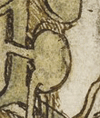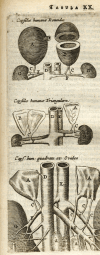History of Adrenal Research: From Ancient Anatomy to Contemporary Molecular Biology
- PMID: 35947694
- PMCID: PMC9835964
- DOI: 10.1210/endrev/bnac019
History of Adrenal Research: From Ancient Anatomy to Contemporary Molecular Biology
Abstract
The adrenal is a small, anatomically unimposing structure that escaped scientific notice until 1564 and whose existence was doubted by many until the 18th century. Adrenal functions were inferred from the adrenal insufficiency syndrome described by Addison and from the obesity and virilization that accompanied many adrenal malignancies, but early physiologists sometimes confused the roles of the cortex and medulla. Medullary epinephrine was the first hormone to be isolated (in 1901), and numerous cortical steroids were isolated between 1930 and 1949. The treatment of arthritis, Addison's disease, and congenital adrenal hyperplasia (CAH) with cortisone in the 1950s revolutionized clinical endocrinology and steroid research. Cases of CAH had been reported in the 19th century, but a defect in 21-hydroxylation in CAH was not identified until 1957. Other forms of CAH, including deficiencies of 3β-hydroxysteroid dehydrogenase, 11β-hydroxylase, and 17α-hydroxylase were defined hormonally in the 1960s. Cytochrome P450 enzymes were described in 1962-1964, and steroid 21-hydroxylation was the first biosynthetic activity associated with a P450. Understanding of the genetic and biochemical bases of these disorders advanced rapidly from 1984 to 2004. The cloning of genes for steroidogenic enzymes and related factors revealed many mutations causing known diseases and facilitated the discovery of new disorders. Genetics and cell biology have replaced steroid chemistry as the key disciplines for understanding and teaching steroidogenesis and its disorders.
Keywords: Addison disease; adrenal hyperplasia; cortisone; cytochrome P450; genetic disease; steroid.
© The Author(s) 2022. Published by Oxford University Press on behalf of the Endocrine Society. All rights reserved. For permissions, please e-mail: journals.permissions@oup.com.
Figures





















Similar articles
-
A Brief History of Congenital Adrenal Hyperplasia.Horm Res Paediatr. 2022;95(6):529-545. doi: 10.1159/000526468. Epub 2022 Nov 29. Horm Res Paediatr. 2022. PMID: 36446323 Review.
-
Congenital adrenal hyperplasia: clinical symptoms and diagnostic methods.Acta Biochim Pol. 2018;65(1):25-33. doi: 10.18388/abp.2017_2343. Epub 2018 Mar 15. Acta Biochim Pol. 2018. PMID: 29543924 Review.
-
Rare forms of congenital adrenal hyperplasia.Clin Endocrinol (Oxf). 2024 Oct;101(4):371-385. doi: 10.1111/cen.15009. Epub 2023 Dec 21. Clin Endocrinol (Oxf). 2024. PMID: 38126084 Review.
-
A brief history of adrenal research: steroidogenesis - the soul of the adrenal.Mol Cell Endocrinol. 2013 May 22;371(1-2):5-14. doi: 10.1016/j.mce.2012.10.023. Epub 2012 Oct 30. Mol Cell Endocrinol. 2013. PMID: 23123735 Review.
-
Inborn errors of adrenal steroidogenesis.Mol Cell Endocrinol. 2003 Dec 15;211(1-2):75-83. doi: 10.1016/j.mce.2003.09.013. Mol Cell Endocrinol. 2003. PMID: 14656479 Review.
Cited by
-
Thirty years of StAR gazing. Expanding the universe of the steroidogenic acute regulatory protein.J Endocrinol. 2025 Feb 6;264(3):e240310. doi: 10.1530/JOE-24-0310. Print 2025 Mar 1. J Endocrinol. 2025. PMID: 39773408 Free PMC article. Review.
-
Non-classical animal models for studying adrenal diseases: advantages, limitations, and implications for research.Lab Anim Res. 2024 Jun 19;40(1):25. doi: 10.1186/s42826-024-00212-8. Lab Anim Res. 2024. PMID: 38898483 Free PMC article. Review.
-
Addison's Disease: Diagnosis and Management Strategies.Int J Gen Med. 2023 Jun 2;16:2187-2210. doi: 10.2147/IJGM.S390793. eCollection 2023. Int J Gen Med. 2023. PMID: 37287503 Free PMC article. Review.
-
Glucocorticoid regulation of cancer development and progression.Front Endocrinol (Lausanne). 2023 Apr 18;14:1161768. doi: 10.3389/fendo.2023.1161768. eCollection 2023. Front Endocrinol (Lausanne). 2023. PMID: 37143725 Free PMC article. Review.
-
Profile of Rat Adrenal microRNAs Induced by Gonadectomy and Testosterone or Estradiol Replacement.Int J Mol Sci. 2025 May 9;26(10):4543. doi: 10.3390/ijms26104543. Int J Mol Sci. 2025. PMID: 40429687 Free PMC article.
References
-
- Shumacker HB. The early history of the adrenal glands: with particular reference to theories of function. Bull Inst History Med 1936;4(1):39-56. https://www.jstor.org/stable/44433654.
Publication types
MeSH terms
Substances
Grants and funding
LinkOut - more resources
Full Text Sources
Medical

